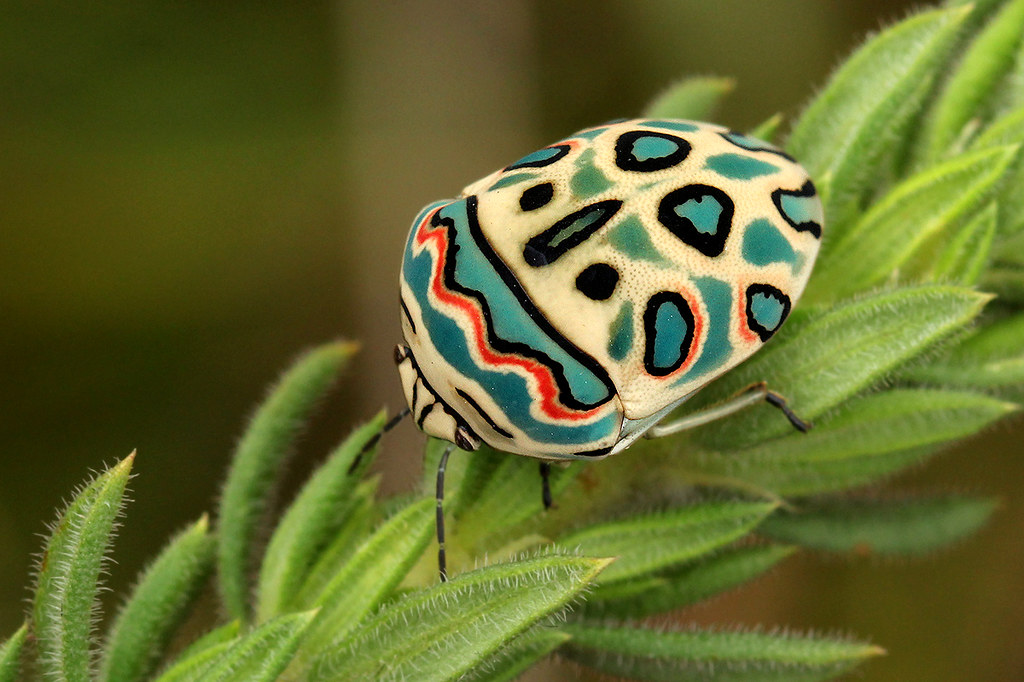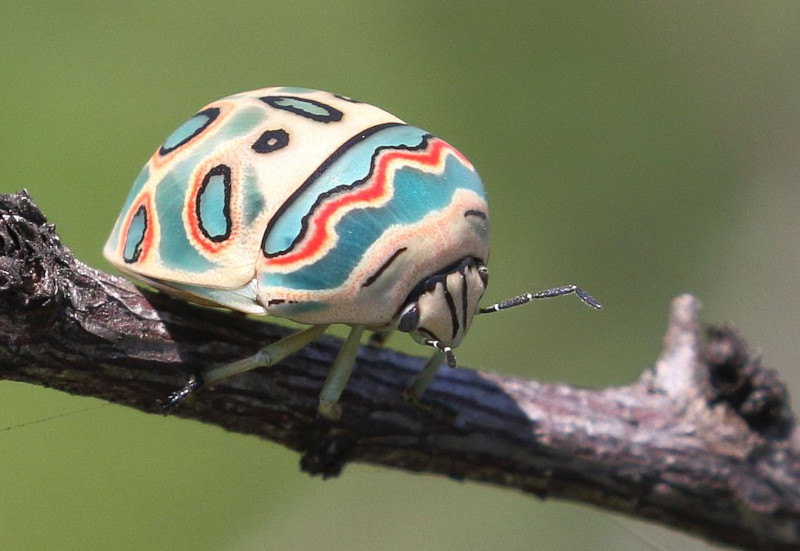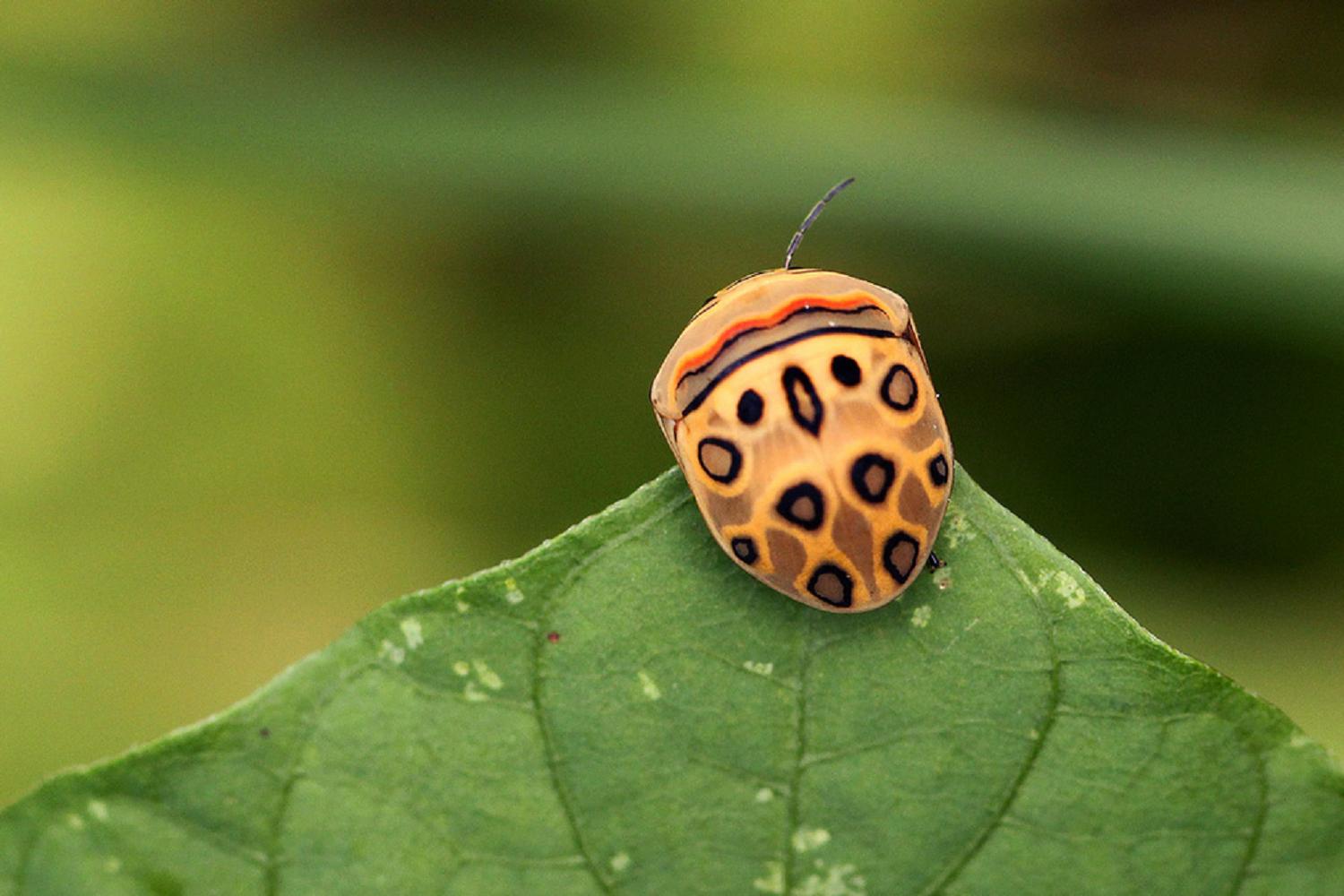A Living Work of Art: Discover the Picasso Bug

🎨🐞 A Living Work of Art: Discover the Picasso Bug! 🖌️✨
Nature has a way of blending beauty with survival instincts, and one insect that truly embodies this spectacular union is the Picasso Bug. With its striking, almost surreal patterns and vivid hues, this insect resembles something one might expect to find on the canvas of a world-famous artist rather than in the wild. Known for its unique and eye-catching appearance, the Picasso Bug has earned its moniker due to its resemblance to the bold, abstract works of the legendary Pablo Picasso. Native to the lush tropical regions of Africa, this tiny creature makes its home among the vegetation, where it blends in perfectly with its surroundings—yet, it’s far from ordinary.
What makes the Picasso Bug so captivating is not just its artistic look, but the fascinating survival mechanism behind its design. It’s a shield-backed insect, and its colorful, intricate patterns serve a very practical purpose: warning predators of its toxicity. The bright colors and geometric shapes of its back send a clear message: “Stay away, I’m not edible!” In the natural world, many animals and insects use color to communicate danger or poison, and the Picasso Bug is no exception. The vivid orange, black, and yellow markings act as a bold deterrent to would-be predators, signaling that this insect is armed with toxins that could be harmful if consumed.
Despite its toxic reputation, the Picasso Bug is not aggressive. It relies on its warning signals to avoid confrontation and peacefully go about its life, feeding on the plants in its environment. Its striking appearance, while seemingly artistic, is the result of millions of years of evolutionary design that has helped it survive in a competitive world. Over time, the insect’s ability to create such a vivid and distinctive pattern has allowed it to avoid becoming prey to a wide range of predators in its tropical habitat.
Interestingly, while the scientific community refers to it by its formal name, Sphaerocoris annulus, the common name “Picasso Bug” captures its true essence in a much more fitting way. The insect’s design evokes the thought of a painting, with its colorful geometric shapes and bold lines, reminiscent of the abstract art movements of the 20th century. It’s as though Picasso himself had decided to paint an insect, creating a perfect fusion of art and nature.
Fun Fact: The Picasso Bug’s scientific name, Sphaerocoris annulus, might be a mouthful, but it doesn’t quite do justice to the bug’s artistic flair. When you look at it, you can easily imagine it as a living canvas, a piece of nature’s own masterpiece. Its appearance continues to fascinate scientists, artists, and nature enthusiasts alike, as it challenges our perception of what constitutes beauty in the natural world.
These insects have evolved over time to live in harmony with the environment, thriving in the tropical African ecosystems where they’re found. Their bodies are covered in a hard, shield-like exoskeleton that not only protects them from the elements but also serves as a strong defense mechanism against predators. It’s a striking contrast to their delicate beauty, and this balance between fragility and strength is one of the many wonders of nature.
As we continue to learn about the Picasso Bug and its role in the ecosystem, we gain a deeper appreciation for how nature has evolved to create such a striking creature. The relationship between color and survival is one of the most fascinating aspects of the natural world, and the Picasso Bug is a prime example of how a beautiful, seemingly delicate design can serve a critical survival function. It’s a perfect blend of form and function, where the artwork on its back is not just for show—it’s an essential part of how this insect navigates the wild.
Whether you’re an art lover, a nature enthusiast, or simply someone fascinated by the wonders of the animal kingdom, the Picasso Bug is a true testament to nature’s ability to create stunning visual masterpieces that serve a deeper, more functional purpose. Next time you find yourself admiring the beauty of nature, remember that even the smallest creatures have their own stories to tell, with their striking colors and patterns contributing to the complex web of life in ways we’re only beginning to understand.











